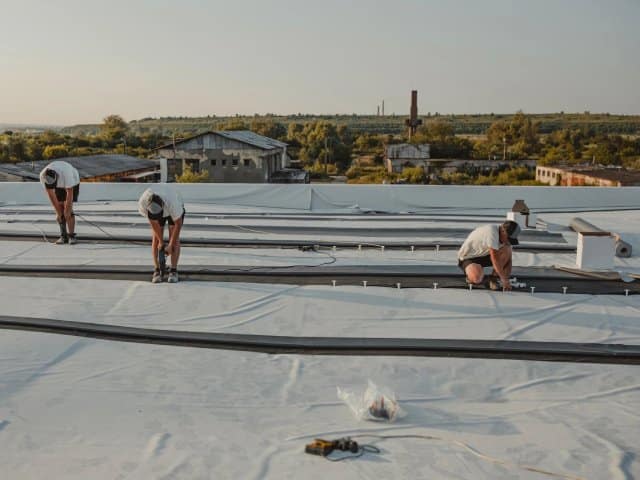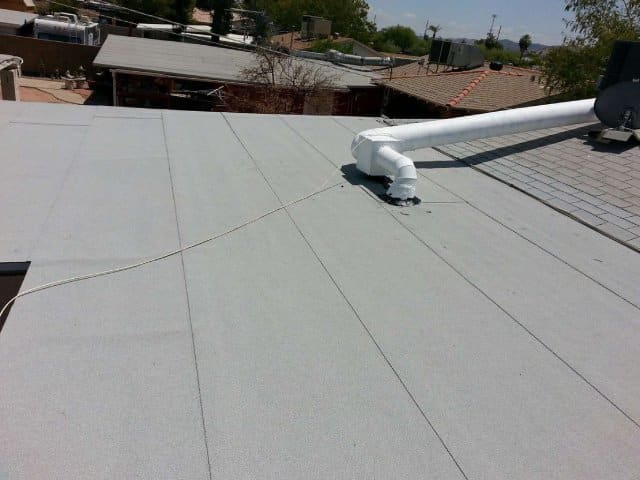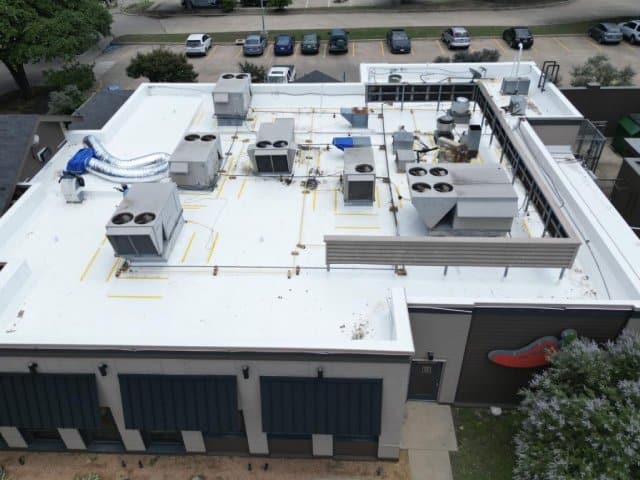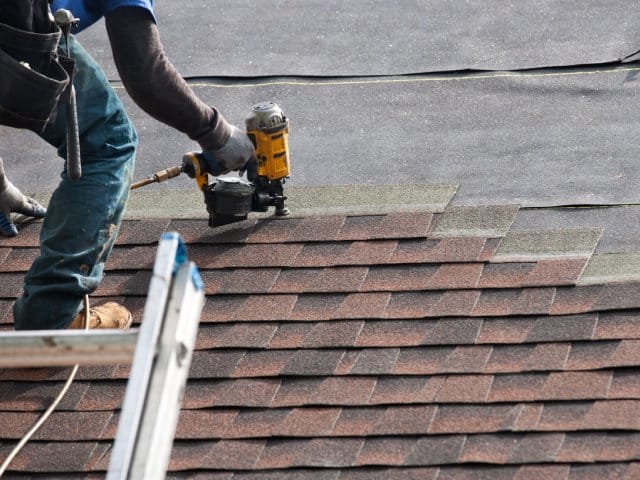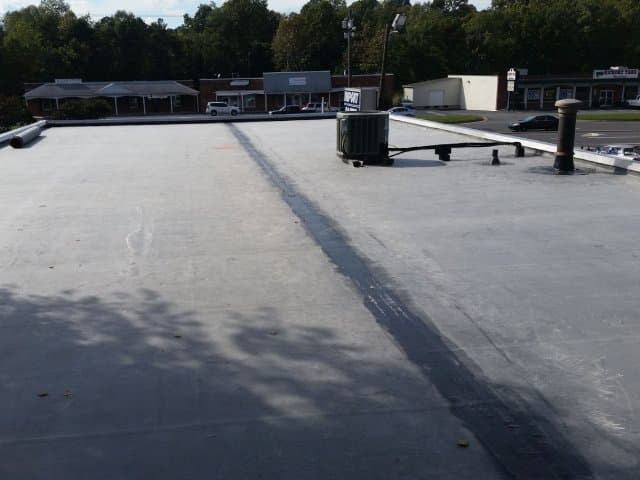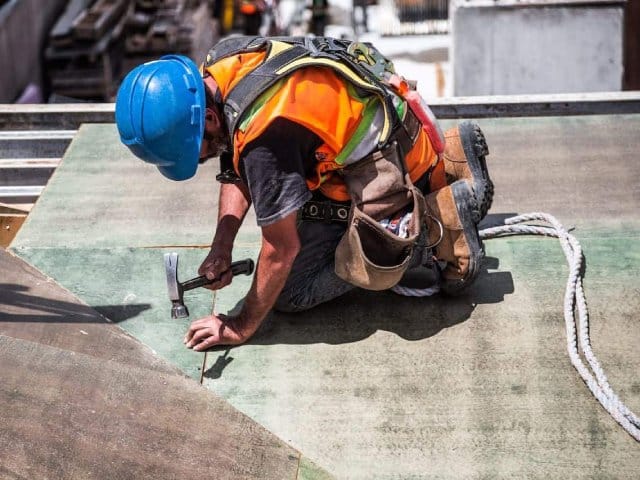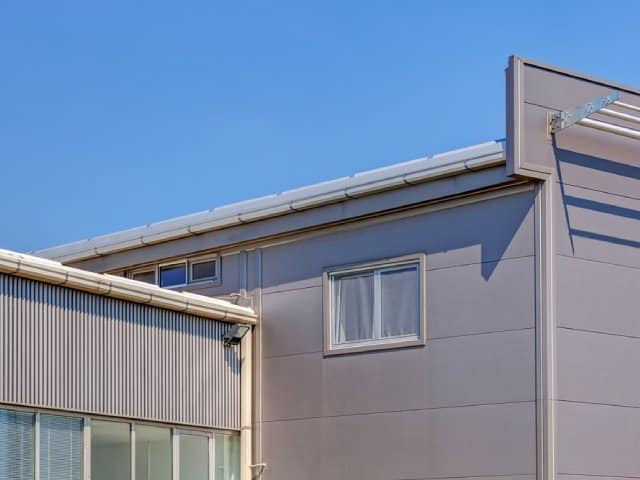Understanding the Importance of Drainage Systems for Commercial Flat Roofs
When it comes to maintaining a commercial flat roof, one key element that often gets overlooked is the drainage system. However, this crucial component is what keeps your roof safe and functional for years to come.
Flat roofs may appear flat, but they are designed with a slight pitch to help channel water away. Without an effective drainage system, water would pool on the roof, leading to leaks, structural damage, and even collapse in extreme cases. In Fayetteville, AR, where weather can be unpredictable, it’s crucial to have a properly installed drainage system to protect your commercial property.
Poor drainage can result in costly repairs, so ensuring that your commercial flat roof has a functional drainage system is essential to its longevity and the safety of your building.
Overview of Drainage Systems for Commercial Flat Roofs
Drainage systems on commercial flat roofs typically come in a few standard forms. Each has its benefits depending on the size of the building, local climate, and roof design.
Let’s explore the most common types of drainage systems used for commercial flat roofs.
Types of Drainage Systems for Commercial Flat Roofs
1. Internal Drains
Internal drains are often used on large commercial buildings. These drains are installed toward the center of the roof and work by funneling water through a system of pipes hidden within the building’s walls. Internal drains are effective because they keep water away from the sides of the building, reducing the risk of damage to the exterior walls.
2. Scuppers
Scuppers are openings placed along the edge of the roof that allow water to flow off and away from the building. They are often paired with downspouts to guide water away from the foundation. Scuppers are a simple and effective drainage system but may require additional reinforcement to handle heavy rainfalls.
3. Gutters
Gutters are a popular and economical choice for smaller commercial buildings. Installed along the roof’s perimeter, gutters channel water to downspouts that direct it away from the building’s foundation. While gutters can be prone to clogging, regular maintenance helps prevent this issue.
Choosing the Right Drainage System for Your Commercial Flat Roof
Selecting the right drainage system for your commercial flat roof depends on several factors:
- Roof size and design: Larger roofs may require internal drains, while smaller ones might benefit from gutters or scuppers.
- Weather conditions: In areas with heavy rainfall, like Fayetteville, AR, scuppers with downspouts or robust gutter systems may be the best choice.
- Building structure: The location of internal plumbing and the overall structure of the building may determine if internal drains are a viable option.
Consulting with a commercial roof contractor like United Roofing & Waterproofing ensures that you choose the right drainage system based on your building’s unique needs.
Common Commercial Roof Drainage Issues
Even with a well-designed drainage system, issues can arise that compromise your roof’s performance. Here are some of the most common problems:
- Clogged Drains and Gutters: Leaves, debris, and other blockages can prevent water from flowing, causing pooling on the roof. This can lead to leaks and, over time, structural damage.
- Improper Slope: If the roof’s slope is too shallow, water might not drain correctly, leading to ponding water, which accelerates wear and tear.
- Cracks and Leaks: Over time, drainage systems can develop cracks, particularly in areas where water is consistently flowing. These cracks lead to leaks and can weaken the roof structure.
- Ice Dams: In colder climates, ice dams can form in gutters and scuppers, preventing proper drainage and causing water to back up onto the roof.
The Process of Drainage Installation for Commercial Flat Roofs
Installing a drainage system on a commercial flat roof requires careful planning and execution.
Here’s an overview of the typical process:
- Assessment: The first step is a thorough evaluation of your roof to determine its slope, size, and existing drainage issues. A professional roofing contractor, like United Roofing & Waterproofing in Fayetteville, AR, will inspect your roof and recommend the best drainage solution.
- Design: Based on the assessment, the drainage system is designed to efficiently channel water away from the roof. This may involve determining the optimal placement for drains, scuppers, or gutters.
- Installation: Once the design is finalized, the drainage system is installed. This involves placing internal drains, scuppers, or gutters, connecting downspouts, and ensuring that the system works as intended.
- Testing: After installation, the system is tested to ensure water flows properly, and adjustments are made if necessary.
The Role of Regular Drainage Maintenance in Roof Longevity
Regular maintenance is key to ensuring your drainage system works effectively over time. Here are some tips to keep your system in top shape:
- Inspect Regularly: Schedule routine inspections to check for blockages, cracks, or any other signs of damage.
- Clean Gutters and Drains: Regular cleaning prevents blockages that can lead to water pooling.
- Monitor During Storms: After a heavy storm, check your drainage system to ensure it is functioning correctly.
- Repair Leaks Immediately: Address any leaks or cracks as soon as they are noticed to prevent further damage.
By keeping your drainage system well-maintained, you can extend the life of your commercial flat roof and avoid costly repairs.
How to Prevent Drainage Problems on Commercial Flat Roofs
Preventative measures can help you avoid common drainage issues. Here’s how you can protect your roof:
- Install Leaf Guards: These prevent debris from clogging gutters and drains, ensuring water can flow freely.
- Ensure Proper Slope: Make sure your roof has the correct slope for efficient drainage.
- Use Heat Tape: In colder climates, heat tape can prevent ice from forming in gutters and drains, reducing the risk of ice dams.
Working with a Commercial Roof Contractor for Drainage Solutions
When it comes to installing or maintaining a drainage system for your commercial flat roof, working with an experienced commercial roof contractor is essential. United Roofing & Waterproofing in Fayetteville, AR, has the expertise and knowledge to design, install, and maintain a drainage system that keeps your roof in great shape.
Our team of professionals will assess your roof’s needs and recommend the best solution for your property. With proper drainage, your roof will last longer, protecting your commercial building and keeping your business running smoothly.
United Roofing and Waterproofing in Fayetteville, AR
Drainage systems are critical to the health and longevity of commercial flat roofs. By choosing the right system and maintaining it regularly, you can prevent water damage and extend the life of your roof. If you’re unsure about your roof’s drainage or need help with installation and maintenance, United Roofing & Waterproofing is here to help. Contact us today for a consultation, and let us ensure your roof is ready for whatever the weather throws at it.
United Roofing & Waterproofing – Fayetteville’s trusted commercial roofing contractor.
